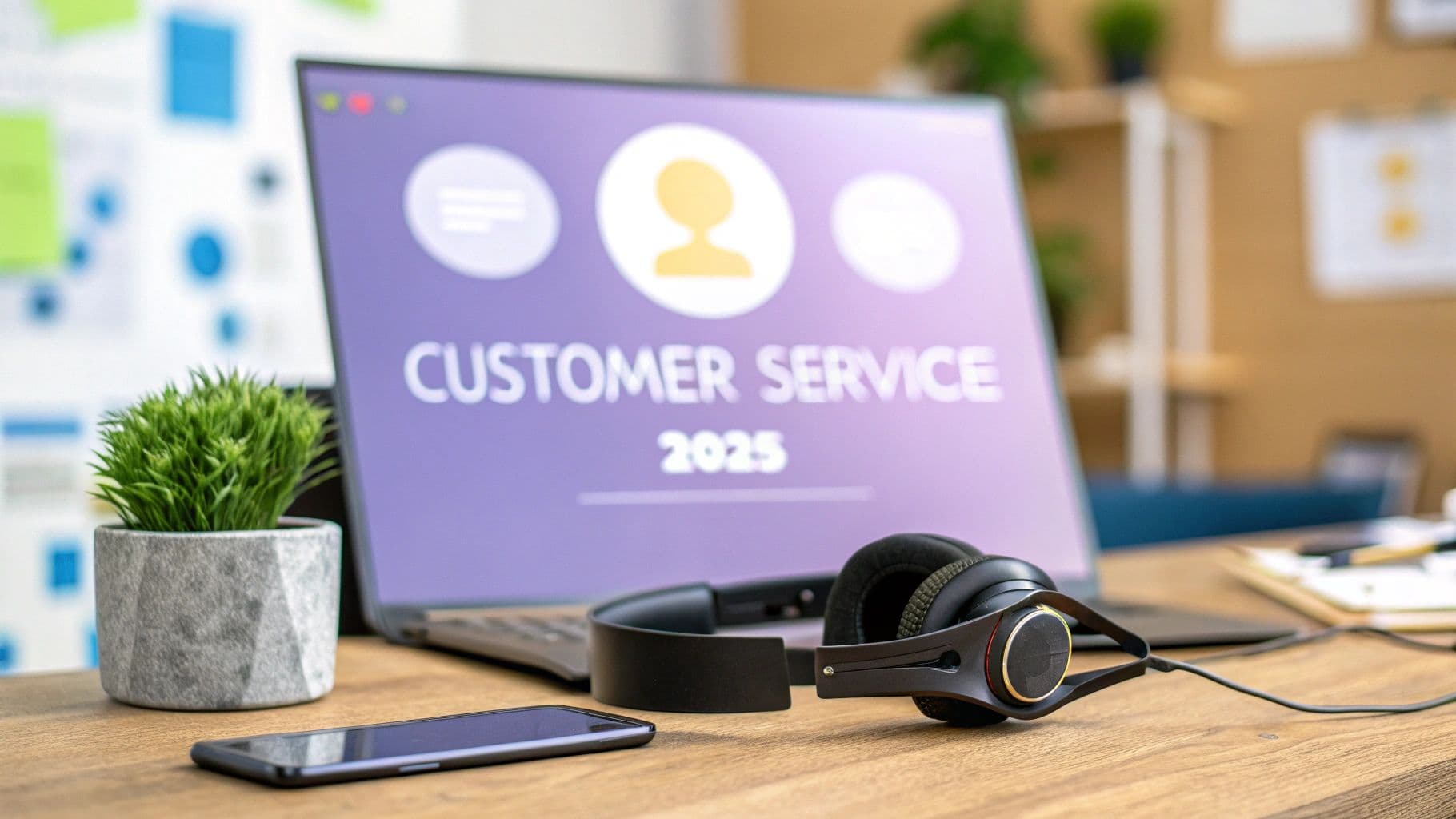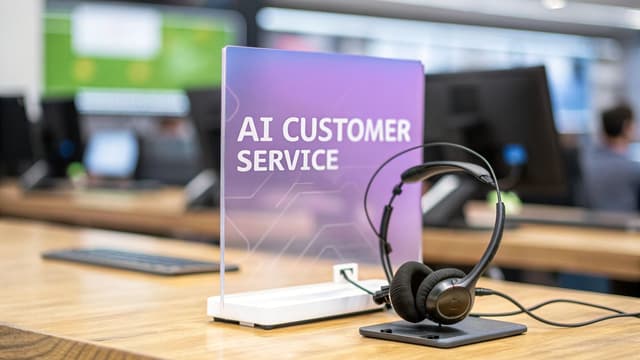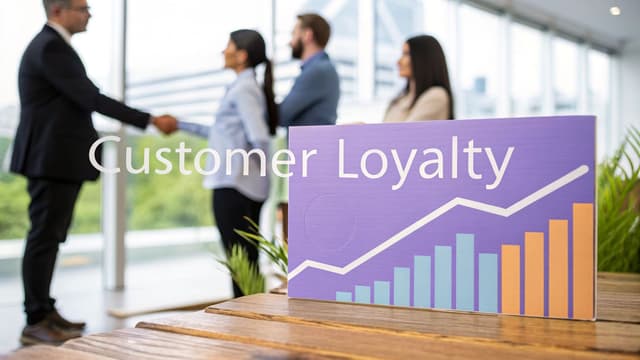Beyond 'The Customer Is Always Right': Redefining Service Excellence in the AI Era
Exceptional customer service is a primary differentiator that drives loyalty and growth. While traditional principles remain relevant, the rise of AI, shifting customer expectations, and a demand for instant support require a new playbook. This guide moves beyond generic advice to deliver a comprehensive roundup of the most impactful best practices for customer service and customer service standard operating procedures. We will explore actionable strategies designed to help you build a modern, efficient, and empathetic support system.
This article provides a blueprint for building a customer service experience that not only satisfies but truly delights your customers. You will learn how to master active listening, integrate omnichannel support, and leverage intelligent automation to scale your operations. For instance, to truly redefine service excellence, businesses should explore the top AI phone receptionist solutions available to optimize call handling and efficiency.
Whether you're aiming to reduce response times, personalize every interaction, or implement proactive support, these nine proven practices offer the specific, actionable insights needed to create a powerful competitive advantage. This is your definitive plan for achieving service excellence.
1. Master Active Listening and Empathy to Build Genuine Connections
At its core, outstanding service begins with the fundamental human ability to listen and empathize. Active listening is more than just hearing words; it's about fully concentrating on the customer's message, understanding their emotional state, and responding in a way that validates their feelings. This foundational practice is a cornerstone of the best practices for customer service, as it transforms a transactional inquiry into a relational experience.

In an age of increasing automation, demonstrating genuine empathy is a powerful differentiator that builds trust and psychological safety. When customers feel truly heard and understood, their frustration dissipates, making them more receptive to solutions. This human-centric approach is the bedrock upon which all other technical and strategic best practices are built, leading to stronger customer relationships and improved first-contact resolution. Zappos famously empowers its agents to spend as long as necessary on calls, ensuring they fully understand and resolve customer issues, which builds incredible brand loyalty.
Actionable Tips for Implementation
- Confirm Understanding: Repeat key points back to the customer. Use phrases like, "So, if I'm hearing you correctly, the package never arrived and the tracking number isn't updating. Is that right?" This shows you are paying attention and ensures accuracy.
- Use Empathetic Phrases: Acknowledge the customer's emotional state with statements like, "I can see how frustrating this must be," or "It sounds like this has been a difficult process for you."
- Ask Open-Ended Questions: Instead of yes/no questions, ask things like, "Can you walk me through what happened?" This encourages the customer to provide more context, helping you get to the root of the problem faster.
- Focus on Collaboration: Frame the solution-finding process as a partnership. Say, "Let's see what we can do to get this sorted out together," rather than rigidly citing company policy.
2. Implement Omnichannel Support for a Seamless Customer Journey
In today's connected world, customers expect to interact with your brand on their preferred channel without their conversation history being lost. Omnichannel support moves beyond multichannel service by integrating these touchpoints, such as phone, email, live chat, and social media, into one unified system. This creates a seamless and consistent experience where context is maintained, which is a critical component of the best practices for customer service.

When a customer can start a chat on your mobile app and then call for more detailed help without repeating their issue, it drastically reduces friction and enhances satisfaction. This integrated approach ensures that no matter how a customer contacts you, the agent has a complete view of their journey. For a comprehensive understanding of how to unify customer interactions across all touchpoints, consult this guide on omnichannel customer experience. Companies like Disney excel at this, allowing guests to manage park plans, reservations, and support requests seamlessly across their website, app, and in-person services, fostering deep brand loyalty. For a deeper dive, you can learn more about omnichannel customer service strategies.
Actionable Tips for Implementation
- Start with Core Channels: Begin by integrating 2-3 of your most popular customer channels first, like email and live chat, before expanding. This makes the initial implementation more manageable.
- Invest in a Robust CRM: A powerful Customer Relationship Management (CRM) system with strong API capabilities is the backbone of omnichannel support. It acts as the central hub for all customer data and interactions.
- Train Agents for Versatility: Equip your team with the skills and tools needed to manage conversations across different formats. An agent should be able to transition smoothly from a social media message to an email response.
- Audit for Consistency: Regularly test and audit the customer experience across all your channels. Ensure that branding, tone of voice, and the quality of support are consistent everywhere.
3. Implement Proactive Customer Service to Prevent Problems
Shifting from a reactive to a proactive mindset is a game-changer and one of the most impactful best practices for customer service. Proactive service means anticipating customer needs and resolving potential issues before they escalate or even occur. Instead of waiting for a customer to report a problem, this approach uses data and foresight to deliver solutions preemptively, turning a potential negative experience into a positive, trust-building interaction.
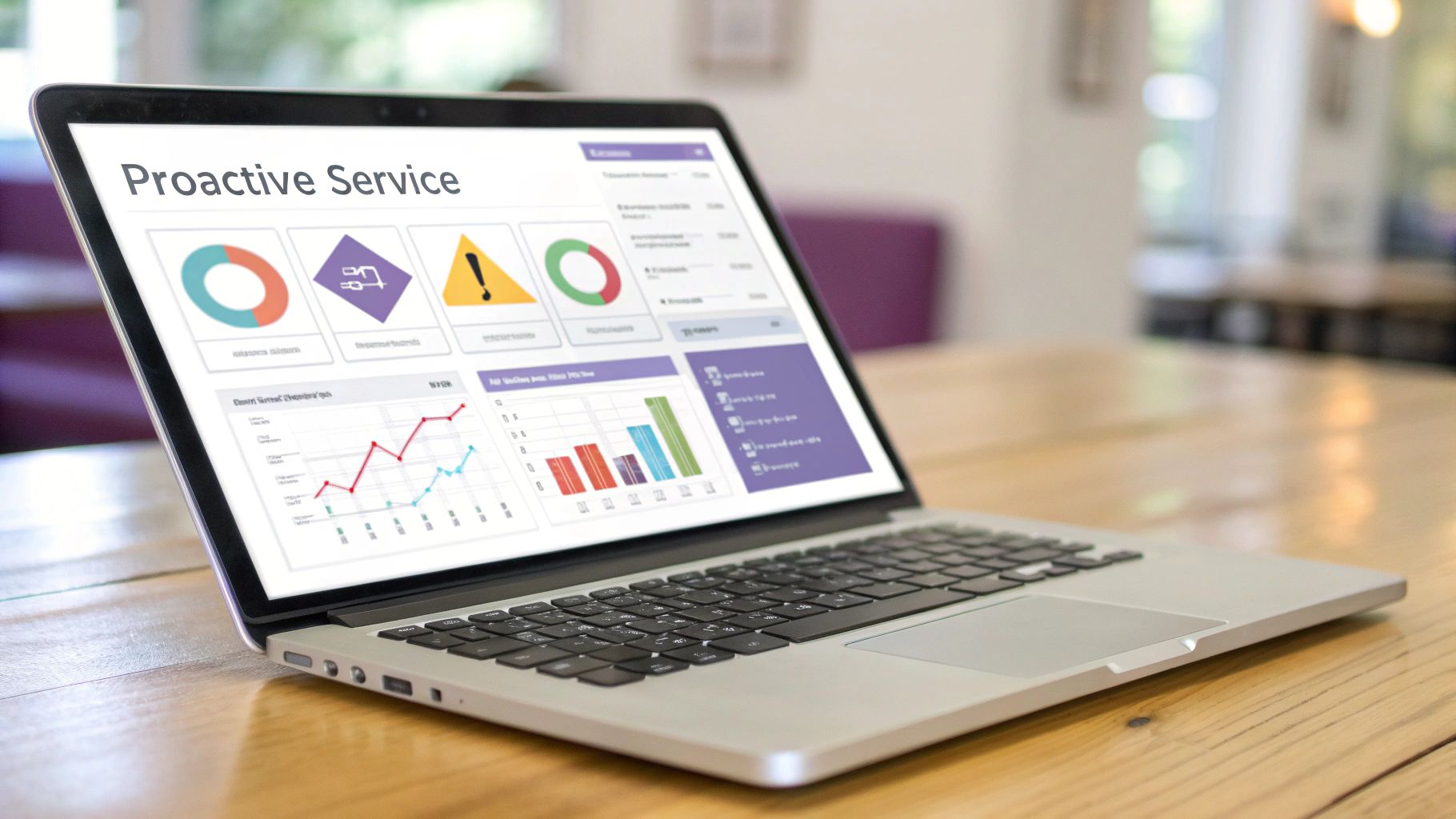
This preventative strategy demonstrates that you value your customer's time and success. It reduces support ticket volume, minimizes customer frustration, and builds profound loyalty. For instance, an e-commerce platform like Amazon notifying customers about a potential shipping delay due to weather, or a software company like HubSpot alerting users to an upcoming system maintenance window, shows respect and care. This approach fundamentally changes the customer relationship from transactional problem-solving to a supportive partnership, enhancing customer retention and brand reputation.
Actionable Tips for Implementation
- Leverage Customer Data: Analyze purchase history, support tickets, and product usage to identify common friction points. Use these insights to predict which customers might encounter a specific issue and reach out first.
- Automate Preemptive Alerts: Set up automated notifications for predictable events. This can include sending alerts for upcoming subscription renewals, low inventory on a frequently purchased item, or detected security vulnerabilities.
- Create Educational Resources: Develop a robust knowledge base, tutorials, and onboarding guides that address frequent questions. Proactively share these resources with new customers or when they reach relevant milestones in their journey.
- Establish Customer Health Scores: For B2B or subscription models, create a "health score" based on product usage, engagement, and support history. A declining score can trigger a proactive check-in from your team to offer help before the customer churns.
4. Prioritize First Contact Resolution (FCR) for Efficiency and Satisfaction
First Contact Resolution (FCR) is a critical metric and practice focused on completely resolving a customer's issue within their very first interaction. This eliminates frustrating follow-up calls or emails, directly impacting customer satisfaction and operational efficiency. Achieving a high FCR rate is a hallmark of excellent service, as it demonstrates that your team is knowledgeable, empowered, and equipped to solve problems swiftly. This practice is essential for any business aiming to deliver the best practices for customer service by respecting the customer's time and effort.
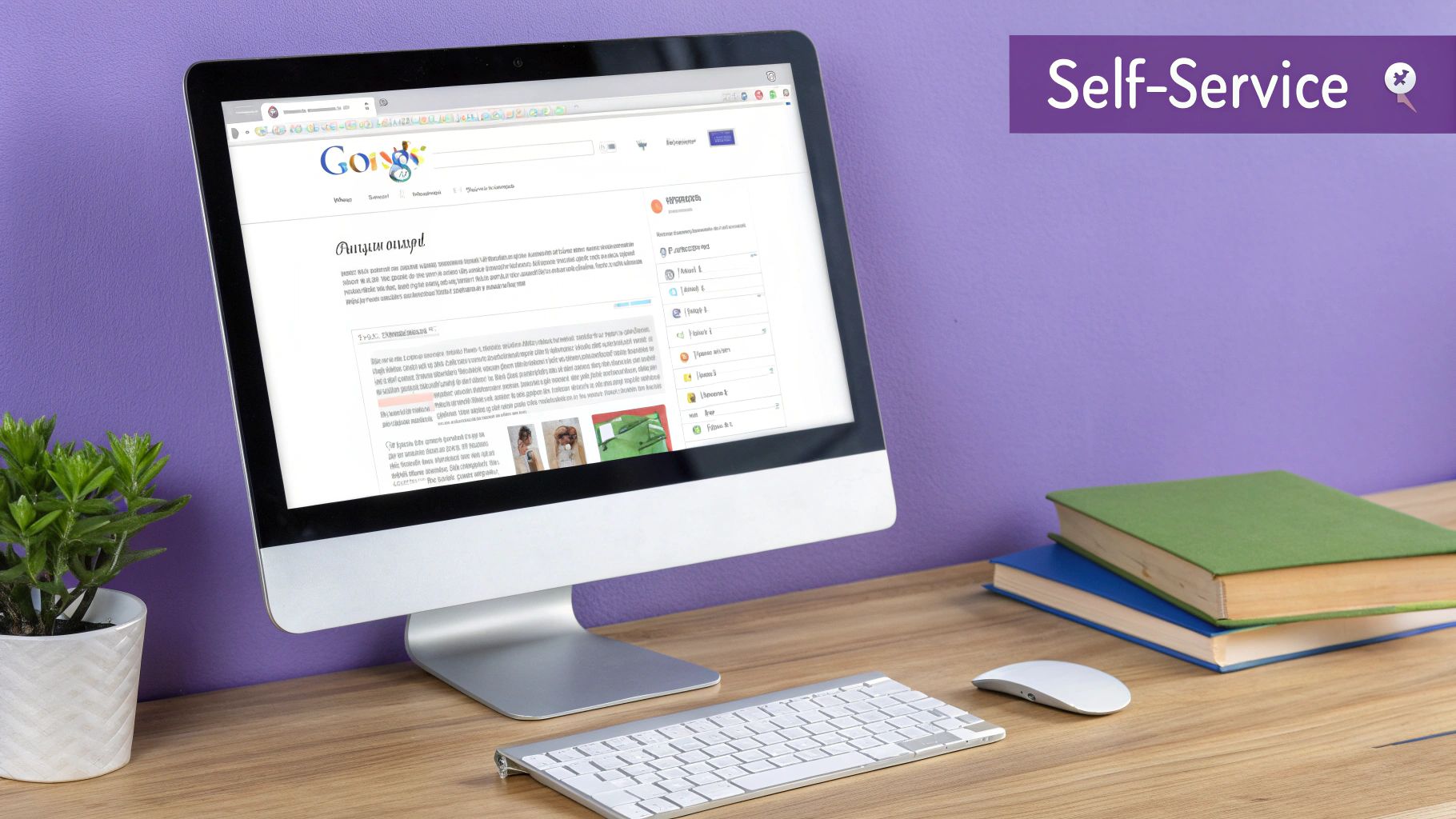
Empowering representatives with the necessary tools, information, and authority is the key to making FCR a reality. When agents can handle issues from start to finish without needing to escalate or transfer, it creates a seamless and positive experience. Companies like USAA, which achieves an impressive 87% FCR rate, prove that investing in agent capabilities pays significant dividends in customer loyalty. Similarly, American Express gives its representatives the authority to resolve complex billing disputes on the first call, turning a potential point of friction into a moment of brand reinforcement and trust.
Actionable Tips for Implementation
- Invest in Comprehensive Training: Equip agents with deep product knowledge and an understanding of common customer issues. Training should focus on problem-solving skills, not just scripted responses.
- Create a Robust Knowledge Base: Develop an easily searchable internal database with step-by-step guides, troubleshooting trees, and policy information that agents can access instantly during a call or chat.
- Empower Agents with Authority: Grant representatives the decision-making power to issue refunds, apply credits, or make exceptions within clear guidelines. This avoids delays caused by waiting for manager approval.
- Analyze Multi-Contact Issues: Use call monitoring and analytics to identify common reasons customers have to contact support multiple times. Use these insights to fix root causes and improve training materials.
- Reward Resolution, Not Speed: Shift performance metrics to prioritize complete resolution over short call times. Implement quality scoring that heavily weights whether the customer's issue was resolved on the first try.
5. Leverage Personalization and Customer Context for Deeper Engagement
Moving beyond generic, one-size-fits-all support, personalization involves tailoring service interactions based on a customer's unique history, preferences, and behavior. By leveraging customer data to increase customer lifetime value, you can create more relevant, efficient, and meaningful experiences that make customers feel seen and valued as individuals, not just ticket numbers. This is a critical component of the modern best practices for customer service, transforming routine inquiries into opportunities for relationship building.
In today's competitive market, customers expect companies to know them. When a support agent immediately references a recent purchase or understands a customer's long-term history, it demonstrates competence and care. This contextual awareness eliminates the need for customers to repeat themselves, reducing friction and accelerating resolution times. Amazon excels at this by equipping its agents with a complete view of a customer's recent orders, browsing history, and past interactions, allowing them to provide highly contextual and efficient support that strengthens loyalty.
Actionable Tips for Implementation
- Create a 360-Degree Customer View: Implement a robust CRM system that consolidates data from all touchpoints, including purchases, past support tickets, and browsing behavior, into a single, accessible profile.
- Train Agents to Use Context: Before engaging, agents should briefly review the customer's history. This simple step can turn a generic greeting into a personalized one, like, "Hi [Customer Name], I see you recently purchased the X-100 model. How can I help you with it today?"
- Use AI to Surface Real-Time Insights: Integrate AI tools that can analyze the conversation and automatically provide agents with relevant data or knowledge base articles, helping them personalize responses without manual searching.
- Respect Privacy and Data Boundaries: Be transparent about the data you collect and how you use it. Always give customers control over their information and ensure your personalization efforts feel helpful, not invasive.
6. Self-Service Options and Knowledge Management
Empowering customers to find their own answers is a powerful and efficient component of modern customer service. Self-service involves providing comprehensive knowledge bases, detailed FAQs, video tutorials, and automated systems that allow users to resolve issues independently. This approach is a key best practice for customer service because it meets the demand for immediate, 24/7 access to information, significantly reducing support ticket volume and freeing up human agents to handle more complex inquiries.
This strategy caters to the large segment of customers who prefer to find solutions on their own rather than contacting support. A well-organized self-service portal enhances customer satisfaction by providing instant gratification and a sense of control. Companies like Atlassian and Microsoft have mastered this by building extensive documentation and community forums that serve millions of users. By investing in robust self-help resources, businesses can scale their support capabilities efficiently while improving the overall customer experience. Learn more about creating an effective help desk knowledge base on flowgent.ai.
Actionable Tips for Implementation
- Analyze Support Tickets: Regularly review incoming support requests to identify common questions and recurring problems. Use this data to prioritize the creation of new knowledge base articles, FAQs, and tutorials that address these high-frequency issues.
- Use Clear, Simple Language: Write help content for a non-technical audience. Avoid jargon and use step-by-step instructions, screenshots, and short videos to make complex processes easy to understand and follow.
- Implement Robust Search: A knowledge base is only useful if customers can find what they need. Integrate a powerful search function with filters and keyword suggestions to ensure users can quickly locate relevant articles.
- Provide an Easy Escalation Path: Self-service won't solve every problem. Always include a clear and accessible option, like a "Contact Support" button, within help articles so customers can easily reach a human agent when they get stuck.
7. Response Time Optimization
In today's fast-paced digital world, speed is a non-negotiable component of exceptional customer service. Response time optimization is the strategic practice of minimizing the delay between a customer's inquiry and your initial reply. This principle acknowledges that a swift response dramatically influences customer perception and satisfaction, setting a positive tone even if an immediate resolution isn't possible. This focus on speed is a critical element of the best practices for customer service, as it directly addresses the modern consumer's expectation for immediacy.
Quickly acknowledging a customer's request demonstrates respect for their time and validates the urgency of their issue. This practice is crucial across all communication channels, from live chat to social media and email. Companies like Buffer, known for its goal of responding to social media inquiries within an hour, and Shopify, with its sub-30-second live chat response times, have set industry benchmarks. To truly optimize response times, it's crucial to implement the right systems and strategies. Consider adopting the best practices for perpetual phone response to maintain consistent availability and responsiveness, ensuring no customer is left waiting.
Actionable Tips for Implementation
- Set Channel-Specific Goals: Define realistic yet ambitious response time targets for each support channel. For example, aim for under one minute for live chat, under one hour for social media, and within four hours for email.
- Use Automated Acknowledgments: Implement auto-replies for emails and chatbots for initial website inquiries. These tools can confirm receipt of the message and provide an estimated response time, which manages expectations and buys your team time to formulate a thoughtful reply.
- Implement a Priority System: Triage incoming requests based on urgency. A system outage or a payment failure should be flagged for immediate attention over a general feature question, ensuring critical issues are handled first. Learn more about improving customer service response times on flowgent.ai.
- Monitor Peak Times: Analyze your support data to identify peak inquiry hours and days. Adjust staffing schedules accordingly to ensure you have adequate coverage when customers need you most, preventing bottlenecks and maintaining speed.
8. Prioritize Continuous Training and Development for Long-Term Excellence
Excellent customer service isn't a one-time achievement; it's a standard that must be continuously cultivated. Prioritizing continuous training and development ensures your support team's skills remain sharp, relevant, and aligned with evolving customer expectations and technologies. This practice moves beyond initial onboarding to embed a culture of perpetual learning, which is a critical component of the best practices for customer service for any organization serious about sustained success.
As products evolve, policies change, and new service tools are introduced, ongoing education keeps your team confident and effective. This proactive approach prevents knowledge gaps and empowers agents to handle complex issues with greater autonomy. World-class service organizations like The Ritz-Carlton, with its daily "line-up" meetings reinforcing its Gold Standards, and Zappos, with its extensive cultural and service training, prove that investing in your people's growth directly translates to a superior customer experience and lasting loyalty. For deeper insights, check out our customer service manager tips.
Actionable Tips for Implementation
- Create Individualized Development Plans: Work with each team member to identify their unique strengths and areas for improvement. Tailor training modules to their specific career goals, whether in technical skills, communication, or leadership.
- Use Real Customer Scenarios: Ditch generic scripts and use anonymized, real-life customer interactions for training exercises. This makes the learning process more practical and directly applicable to their daily work.
- Implement Peer-to-Peer Learning: Foster a collaborative environment where experienced agents can mentor newer team members. This not only transfers practical knowledge but also strengthens team cohesion and morale.
- Conduct Regular Role-Playing: Schedule frequent role-playing and simulation exercises to practice handling difficult conversations, new product questions, or crisis situations in a low-stakes environment.
- Track Training Impact: Connect training initiatives to key performance metrics like CSAT, FCR, and average handling time. This helps you measure the ROI of your development programs and refine your approach.
9. Implement a Robust Customer Feedback Loop for Continuous Improvement
Merely resolving issues isn't enough; top-tier service organizations actively listen and adapt. Systematically collecting and acting on customer feedback is one of the most crucial best practices for customer service. This process involves creating a structured loop where you gather customer opinions, analyze them for insights, and use that data to drive tangible improvements. This transforms customer service from a reactive cost center into a proactive engine for business growth and customer loyalty.
This practice demonstrates that you value your customers' opinions, making them feel like partners in your brand's evolution. When customers see their suggestions implemented, it builds profound trust and a sense of ownership. Industry leaders like Airbnb have perfected this with their dual-rating system, where feedback from both hosts and guests directly influences platform policies and feature development, creating a continuously improving, user-centric ecosystem.
Actionable Tips for Implementation
- Keep Surveys Short and Specific: Use targeted micro-surveys like Net Promoter Score (NPS) or Customer Satisfaction (CSAT) immediately after an interaction. Ask questions that yield actionable insights, not just vanity metrics.
- Close the Feedback Loop: When you implement a change based on customer feedback, communicate it. Send an email or post on social media saying, "You asked, we listened. Here's what's new." This validates the customer's effort.
- Utilize Multiple Channels: Don't rely solely on surveys. Gather feedback from social media mentions, review sites, and direct conversations. Train agents to proactively ask, "Is there anything we could have done better today?" during interactions.
- Analyze for Trends, Not Anecdotes: Look for recurring themes and patterns in the feedback. While individual comments are useful, systemic improvements come from addressing the root cause of common issues that multiple customers are reporting.
Best Practices for Customer Service: 9-Point Comparison
| Customer Service Practice | Implementation Complexity 🔄 | Resource Requirements ⚡ | Expected Outcomes 📊 | Ideal Use Cases 💡 | Key Advantages ⭐ |
|---|---|---|---|---|---|
| Active Listening and Empathy | Medium: Requires ongoing training and emotional intelligence development | Moderate: Training investment, emotionally demanding for staff | Improved satisfaction, stronger relationships, higher first-call resolution | Situations needing deep understanding and emotional connection | Builds trust, reduces escalation, enhances positive word-of-mouth |
| Omnichannel Support Integration | High: Complex technical integration and multi-platform training | High: CRM, cloud platforms, continuous maintenance | Seamless customer experience, improved retention, operational efficiency | Businesses with diverse customer touchpoints and multi-channel presence | Consistent messaging, better data insights, competitive advantage |
| Proactive Customer Service | High: Requires advanced analytics and monitoring systems | High: Data analytics tools, automated alerts, content creation | Reduced churn, fewer tickets, increased lifetime value | Companies aiming to anticipate issues and reduce reactive support | Prevents problems, demonstrates care, competitive differentiation |
| First Contact Resolution (FCR) | Medium-High: Extensive agent training and robust knowledge bases | Moderate-High: Training and system integration | Higher satisfaction, lower costs, improved loyalty | Environments focused on efficiency and complete problem solving | Reduces repeat contacts, increases confidence, lowers effort scores |
| Personalization and Customer Context | Medium-High: Data integration and privacy compliance | High: CRM systems, AI tools, extensive training | Higher loyalty, cross-selling, efficient resolution | Companies leveraging customer data for tailored experiences | Creates relevance, improves value, differentiates brand |
| Self-Service and Knowledge Management | Medium: Requires content creation and system updates | Moderate: Knowledge base development, chatbot implementation | 24/7 support, reduced volume, faster simple resolutions | Suitable for high-volume, common issues, and technical support | Cost-effective, scalable, empowers customers |
| Response Time Optimization | Medium: Setting standards and monitoring systems | Moderate: Automation tools, staffing adjustments | Improved trust, reduced frustration, competitive edge | Businesses prioritizing quick initial response | Enhances satisfaction, promotes accountability |
| Continuous Training and Development | Medium-High: Ongoing training programs and skill assessments | High: Time, trainers, development resources | Consistent quality, employee retention, adaptability | Companies valuing long-term employee and service quality growth | Boosts morale, improves skills, strengthens culture |
| Customer Feedback Collection and Action | Medium: Multi-channel feedback systems and analysis | Moderate: Survey tools, analysis resources | Data-driven improvements, higher engagement, early issue detection | Organizations seeking to improve via customer insights | Supports continuous improvement, increases loyalty |
From Practice to Performance: Implementing Your Modern Service Strategy
Navigating the landscape of modern customer expectations can feel complex, but the path to excellence is paved with intentional, strategic action. We have explored nine foundational best practices for customer service, moving from the essential human touch of active listening to the technological power of omnichannel integration. Each practice, whether it's the efficiency of first contact resolution or the loyalty-building impact of proactive support, represents a critical component of a greater whole. Together, they form a blueprint for transforming your support function from a reactive necessity into a proactive, revenue-driving engine.
The core takeaway is that exceptional service is not a single action but a holistic system. It’s an ecosystem where empathetic agents are empowered by robust self-service options, and where rapid response times are balanced with deep personalization. This synergy is what separates adequate service from a memorable, brand-defining experience. Mastering these concepts creates a virtuous cycle: collecting customer feedback informs continuous training, which in turn improves first contact resolution and customer satisfaction, ultimately strengthening your brand's reputation and bottom line.
Your Actionable Next Steps
To move from theory to reality, a phased implementation is key. Don't try to overhaul everything at once. Instead, begin with an audit of your current operations against the nine practices discussed.
- Assess and Prioritize: Identify your 2-3 biggest opportunities for improvement. Are your response times lagging? Is your knowledge base outdated? Start where you can make the most significant impact quickly.
- Empower Your Team: Begin with training focused on empathy and active listening. These "soft skills" are the bedrock of every positive interaction, regardless of the channel.
- Invest in Technology: Evaluate your tech stack's ability to support an omnichannel experience and enable personalization. A unified view of the customer journey is no longer a luxury; it's a fundamental requirement.
- Establish a Feedback Loop: Implement a systematic way to collect, analyze, and, most importantly, act on customer feedback. Use this data to guide your strategy and demonstrate to customers that their voice matters.
The True Value of Service Excellence
Ultimately, adopting these best practices for customer service is an investment in your company's future. It's about building resilience, fostering customer loyalty that withstands market shifts, and creating brand advocates who drive organic growth. In a competitive marketplace, a superior service experience is one of the most durable competitive advantages you can build. It’s the human element, augmented by intelligent technology, that will secure your success for years to come.
Ready to supercharge your service strategy and implement these best practices with unparalleled efficiency? Discover how FlowGent AI can automate routine inquiries, provide instant context to your agents, and help you deliver personalized, 24/7 support at scale. Explore the platform and see how you can transform your customer service today at FlowGent AI.
